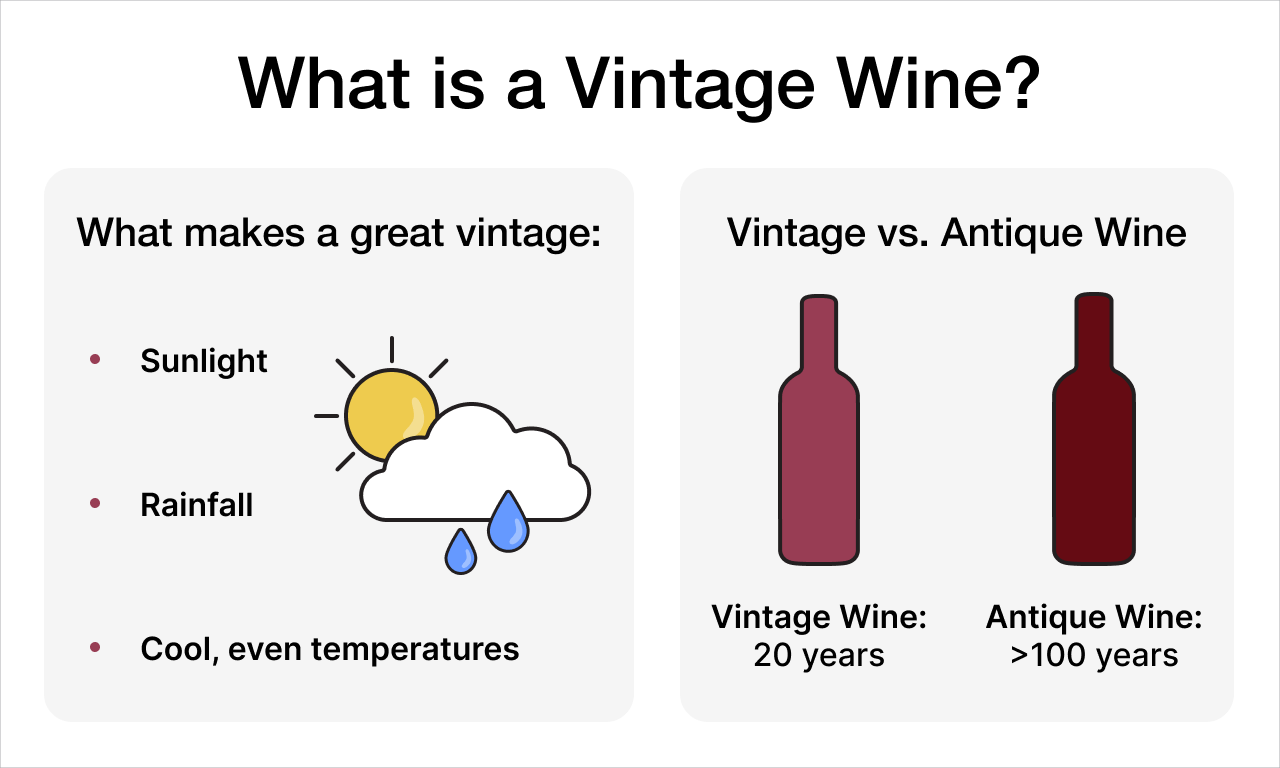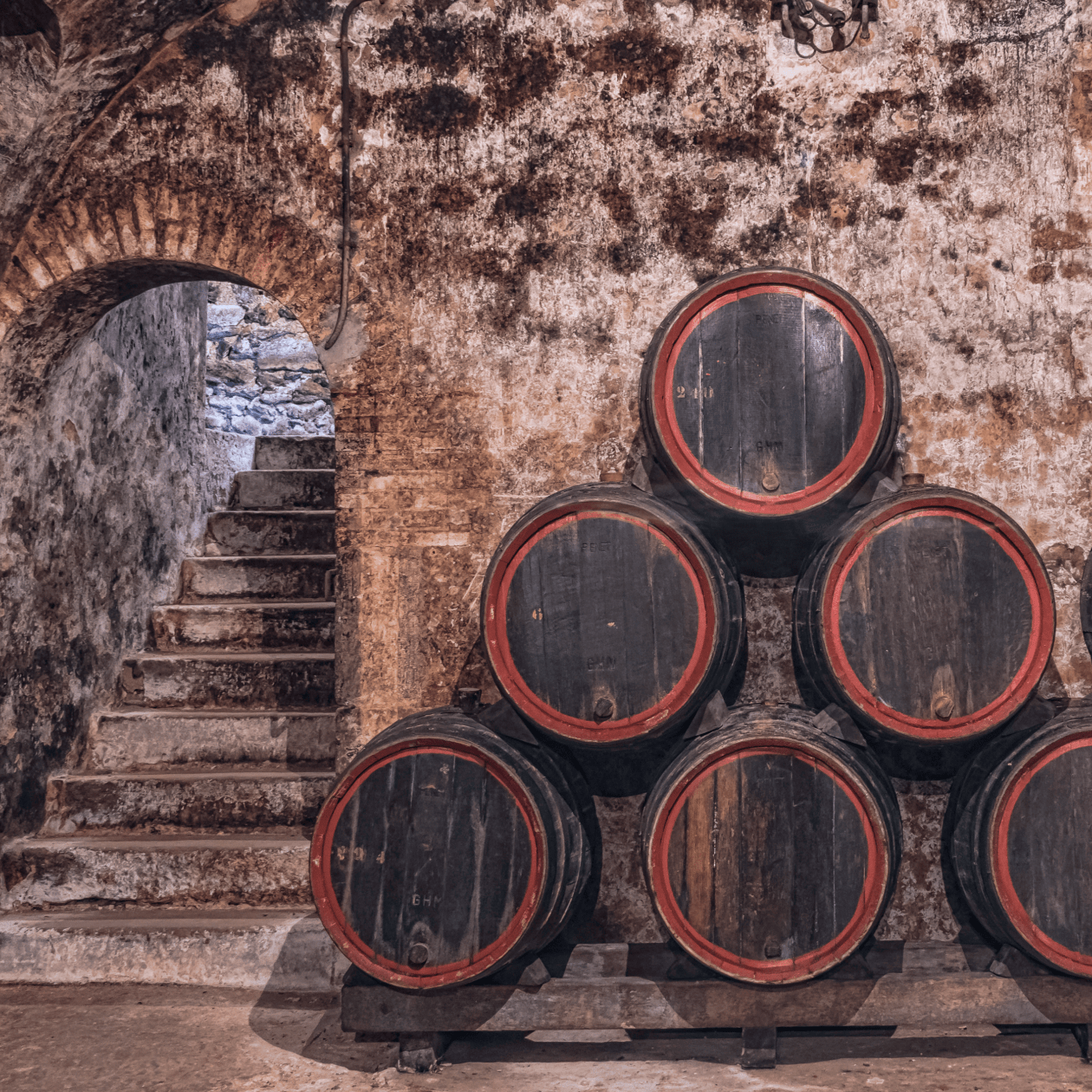
What is a Wine Vintage and What Does it Mean?
Ever found yourself perplexed by the cryptic term 'vintage' adorning a wine bottle? You're not alone.
Vintage means a few different things in the world of wine, and in this article, we’re breaking down its key definitions and what makes a good vintage.
What Does Vintage Mean in Wine?
The word “vintage” in winemaking refers to the year the grapes were harvested, which you can find on the wine label. While this may seem simple, the vintage year can tell us a lot about the quality and taste of the wine.
By tracing the growing season back to a given year, we can see the weather conditions, climate conditions, the amount of rain the region received, and other factors such as frost or wildfires.
Understanding what happened in the wine region during a particular point in time reveals the unique characteristics of a particular bottle of wine.
Now that we know what wine vintage means, let’s look at vintage wines, which are slightly different from “wine vintage.”
How Many Years is Vintage?
When one says “vintage wine,” this generally refers to a bottle around 20 years old or older.
What Makes a Good Vintage?
Dating back to Roman times, consuming aged wine symbolized wealth and status; not much has changed today. In the modern age, the term “vintage” is enough to signify a high-quality wine.
Tannic and acidic wines like Cabernet Sauvignon, which may taste sharp and astringent on the palate when young, become smoother with age and reveal rich notes like dark chocolate, coffee, blackberry, and savory wood flavors.
Other wines that develop a complex bouquet as they age include toasty Champagne, Nebbiolo, Syrah, Chardonnay, and Pinot Noir.
Conditions for a Great Vintage
1. Growing Season
A good vintage primarily reflects the ideal weather conditions that produce healthy grapes.
The best season for growing in the Nothern Hemisphere, which includes North America, Europe, and Asia, is from April to late October. For the Southern Hemisphere, which includes South America, Australia, New Zealand, and South Africa, growing takes place from October through April.
Here are the necessary conditions to look for when it comes to each season.
Summer: Most varietal types thrive in summer climates, as this season produces a balanced ration of sunshine and rain, both vital for viticulture. However, too much rain could lead to fungal rot, so ensuring the grapes get plenty of sunlight is important.
Fall: Autumn means harvest time in both the Northern and Southern Hemispheres. In the final few months, milder conditions and gentle rainfall are necessary to stave off rot and allow grapes to ripen fully.
2. Sun
No matter what the varietal or where it grows, sunlight is the most crucial factor in grape growing, especially when the goal is producing a prime vintage. Sunlight encourages steady grape ripening and helps to balance the grape’s acidity, tannins, and sweetness levels. Too little sunshine can result in unbalanced flavors, rot, and disease.
3. Temperature
The worldwide standard for growing temperature is that grapes spend a time period of around six months in climates exceeding 50°F. If the weather is too hot, the grapes will mature too fast and develop too much sugar. If too cold, the grapes will be sharper with too much acidity.

When Does Wine Vintage Matter?
From a buying perspective, a great vintage can drive up expenses astronomically, but how good an expensive aged wine is will also depend on your personal taste preferences.
There may even be times when buying vintage wines is not necessary, depending on if the climate is stable year-round.
Here’s when vintage variations matter and when they don’t.

When Buying Vintage Dated Wine Matters
If the Wine Comes from a Varied Climate
When choosing a wine from a climate where the conditions are less predictable, like in Germany, Austria, France, Italy, Spain, New Zealand, or Chile, a specific vintage is a window into the growing conditions of that particular year. This means the taste of a wine from any of these places could be strikingly different even one year apart.
If You’re Collecting
When gathering a select few of your favorite wines, paying attention to vintages is important. This will help you learn about the differences between regions and varietals, helping you establish more authority as a collector.
When it Doesn’t
If the Wine Comes from a Stable Climate
When buying wines crafted from grapes grown in stable climates, there is less of a need to pay attention to vintage. With consistently sunny skies and temperate weather conditions, the palate of these wines won’t change. Examples of stable climates include Southern Italy, Central Spain, Southern California, and Portugal.
If You Love a Wine from a Certain Region
If you have a favorite varietal from a specific region, no matter the vintage, this will allow you to experience a range of flavors surrounding that particular varietal. This is one way to broaden your palate further, even if you prefer to stick to one type of wine.
Now that we’re aware of when a vintage may or may not matter, let’s look at the difference between antique and vintage.

Antique vs. Vintage
While “antique” isn’t commonly used in the wine world, it is useful when referring to old wines with even longer-term aging potential past 20 years. Generally, any varietal aged over 100 years can be considered an antique.
Explore More Vintages
Shop premium vintage items at affordable prices at Macy’s Wine Shop. You’ll find luscious and bright wines of varying years from around the globe.
For a full guide to enjoying your favorite sippers, visit The Wine Blog for all the latest vino info you’ll need.









